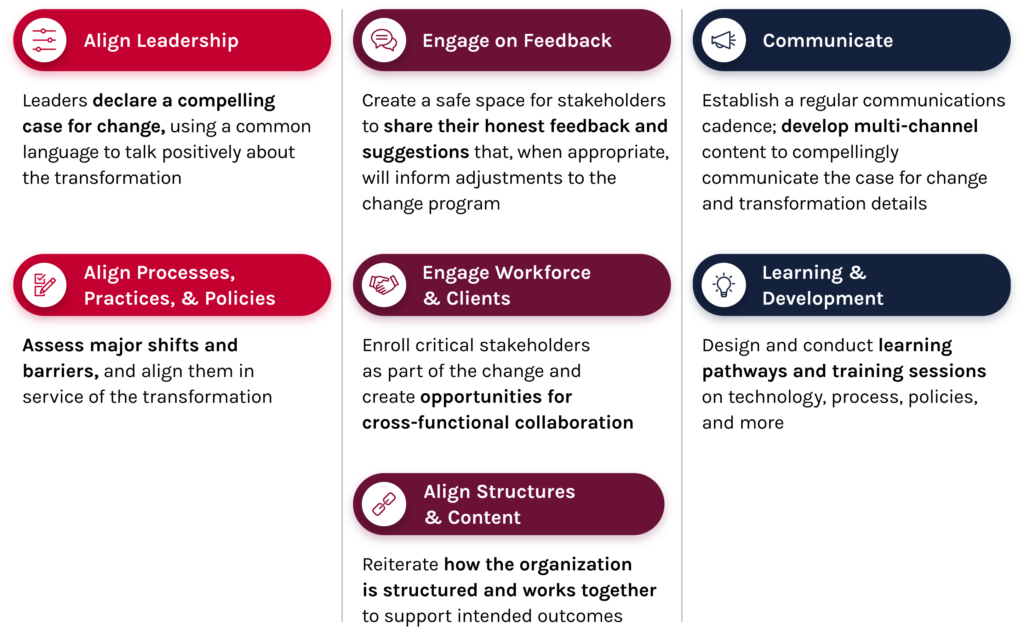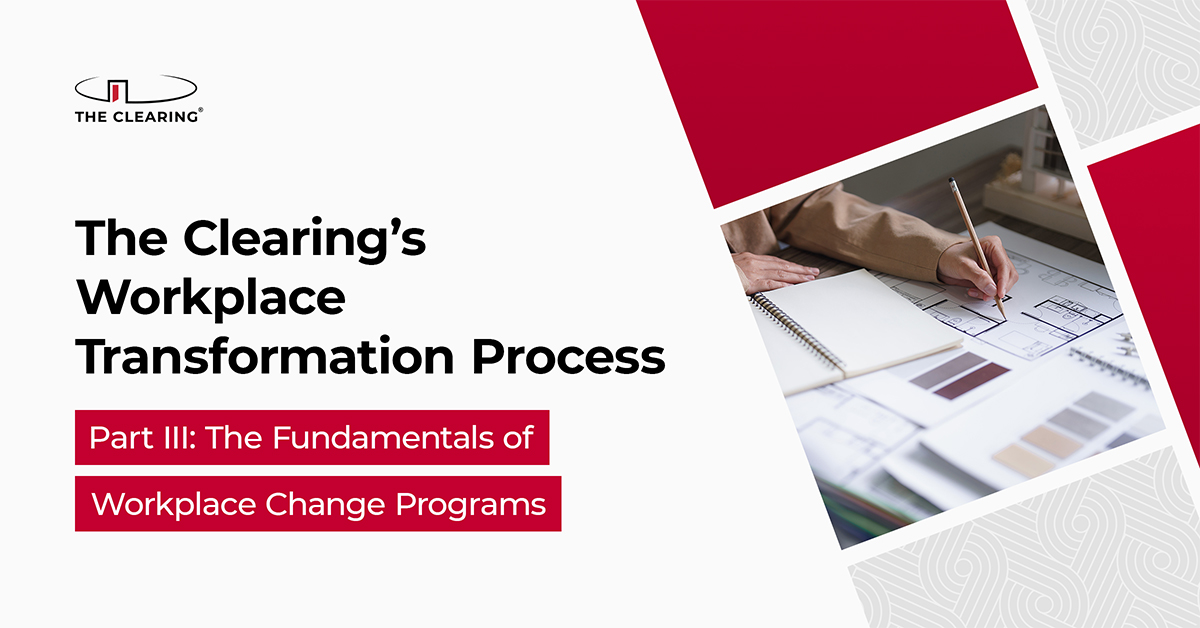No two workplaces are the same, with one exception: people are at the center of every single one. Because of that, no two workplace transformation strategies can be identical, which is where The Clearing comes in.
In the first post in our series on The Clearing’s unique approach to workplace transformation, Nick Srebrow covered how we define workplace change management. In part two, Nick discussed the conditions required for successful workplace transformation. In the final piece of our series, Nick lays out the fundamentals of establishing a workplace change program.
Fundamental Workplace Transformation Requires the Right Fundamentals
In our previous post, we discussed how the data The Clearing has collected over a decade of helping organizations implement change has allowed us to hone our people-first approach to workplace transformation. Just as we used that data to identify the required conditions for successful change efforts, we have also identified the fundamentals needed to establish a change program.
Take a look at the infographic below for the nuts and bolts of each one, then read on for why these fundamentals play an important part in laying the foundation for workplace transformation.

Align Leadership
Leaders are the navigators of transformation. They must align on the ‘Why,’ ‘What,’ and ‘How,’ serving as a guiding force. Teams rely on them for clear communication and direction during change. This alignment ensures a unified message, guiding the entire organization through the transformation.
Engage on Feedback
Soliciting, collecting, and when appropriate acting on feedback is critical to change efforts. Workplace transformation can be a messy and challenging process. As organizations work toward desired outcomes, feedback becomes the guardrails that keep the effort on track, and can be an early warning of arising challenges. Engaging with feedback in good faith has the dual benefit of stakeholders feeling heard and keeping track of successes and obstacles along the way.
Communicate
Regular communication with all stakeholders, especially those impacted by a transformation is critical. In times of change and uncertainty, facts, myths, and stories compete to become the dominant narrative. Steady, clear communication across multiple channels strengthens facts and weakens the myths and stories that may crop up. Regular and effective communication also keeps everyone informed and aligned on the current status and the path forward.
Engage Workforce & Clients
To gain widespread buy-in and identify change champions and catalysts, a powerful approach is to involve your stakeholders in the transformation. By extending an invitation and enhancing the case for change, you foster a sense of ownership and enthusiasm for the initiative’s success. This engagement and enrollment process often uncovers collaborative opportunities that might have otherwise gone unnoticed.
Align Processes, Practices, & Policies
Organizations must understand what a transformation means for their firm. What major changes do they anticipate? What are the barriers that might create difficulties? What opportunities may come to light? Understanding all of these facets and bringing them into alignment in service of the transformation acknowledges the challenges that need to be overcome or adjustments that folks will need to make, while still keeping the focus on the end goal.
Learning and Development
During organizational transformation, which often introduces new technology, processes, and policies, it is crucial to offer stakeholders tailored learning and training opportunities. This ensures their readiness for success and a comprehensive understanding of their roles within the post-transformation organization.
Align Structures & Content
Successful transformation necessitates mobilizing the entire organization. Articulating and communicating how each component fits into the larger picture offers vital context to various departments and their individual team members. This empowers them to grasp the significance of their roles within the broader effort and understand how they contribute to the overall transformation.
We’ve now covered the three tenets that uniquely position The Clearing to guide organizations through workplace transformation. If you’d like to learn more, take a look at this overview of our workplace practice. And if you’d like to discuss a potential change for your organization, we are ready to chat – you can reach our team of workplace experts anytime here.








 The Clearing’s Employee Experience
Improvement model, adapted from Itam
& Ghosh, 2020, focuses on three objectives:
The Clearing’s Employee Experience
Improvement model, adapted from Itam
& Ghosh, 2020, focuses on three objectives: 












